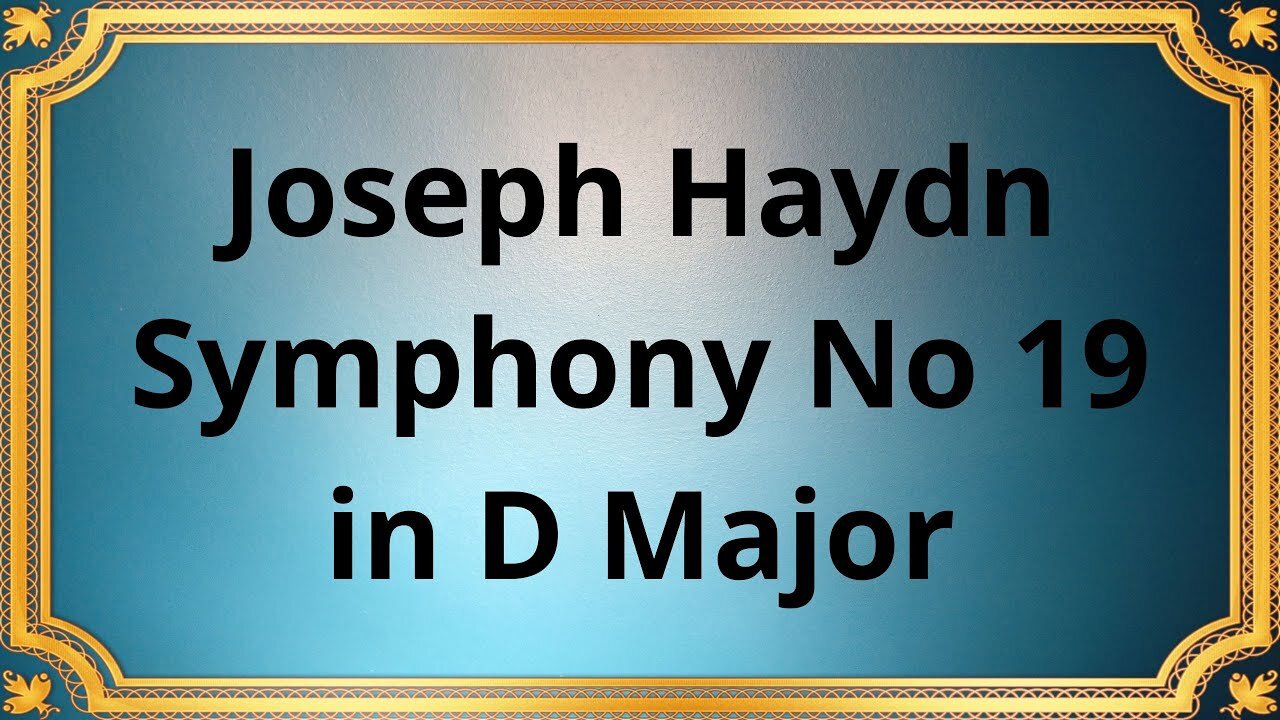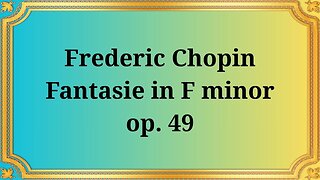Premium Only Content

Joseph Haydn Symphony No 19 in D Major
Joseph Haydn's Symphony No. 19 in D Major is a captivating musical composition that showcases the composer's mastery of the symphonic form. Composed in the mid-1700s, this symphony is a prime example of Haydn's classical style, characterized by balanced phrases, clear melodies, and elegant instrumentation.
The Symphony No. 19 in D Major is a four-movement work that follows the traditional symphonic structure of the time. The first movement is in sonata form, featuring a lively Allegro with a recurring theme that is developed throughout the movement. The second movement is a slow Andante that provides a contrast to the energetic opening. The third movement is a minuet and trio, a dance-like form that was popular in the 18th century. Finally, the symphony concludes with a lively Allegro that brings the work to a satisfying close.
Haydn's Symphony No. 19 is notable for its use of orchestration, which is typical of the classical period. The work is scored for a small orchestra consisting of two oboes, two horns, and strings. Haydn expertly balances these instruments to create a rich and varied sound palette.
The first movement begins with a unison melody played by the strings that is soon joined by the winds. Haydn expertly develops this theme throughout the movement, creating a sense of tension and release. The second movement is characterized by a simple, song-like melody played by the strings with a warm and expressive accompaniment by the winds. The minuet and trio provide a playful and dance-like contrast to the previous movement, while the final Allegro features a lively and cheerful melody that brings the work to a joyful conclusion.
Joseph Haydn was a prominent composer during the classical period and is widely regarded as one of the most influential composers of his time. He is often referred to as the "Father of the Symphony" and is credited with helping to establish the symphonic form as a central genre of classical music.
The Symphony No. 19 in D Major was composed in 1765, during Haydn's early years as a composer. At this time, he was employed as a court musician for the wealthy Esterházy family in Austria. The Esterházys were avid patrons of the arts and provided Haydn with a stable and supportive environment in which to develop his craft.
Conclusion
Joseph Haydn's Symphony No. 19 in D Major is a timeless work of classical music that showcases the composer's skill and mastery of the symphonic form. Its lively melodies, elegant instrumentation, and balanced structure make it a beloved piece of music for classical music enthusiasts and musicians alike.
You have the opportunity to support the channel
https://www.donationalerts.com/r/radsiaral
https://t.me/radsiar
-
 11:13
11:13
Classical music_Music Inspiration
1 month agoFrederic Chopin Fantasy in F minor, Op. 49
742 -
 LIVE
LIVE
Crypto Power Hour
11 hours agoTop 10 Cryptocurrency Staking Platforms
1,492 watching -
 35:53
35:53
Mike Rowe
1 day agoBreaking Down Bill Gates' 3 Tough Truths About Climate | Alex Epstein #457 | The Way I Heard It
29.2K32 -
 23:22
23:22
Stephen Gardner
1 day ago🚨BREAKING: Mamdani Won and What Trump EXPOSES About It is SHOCKING!!
15.9K100 -
 1:16:41
1:16:41
Steve-O's Wild Ride! Podcast
18 hours agoAdam Ray Absolutely Kills Steve-O | Wild Ride #273
9.35K2 -
 37:22
37:22
efenigson
1 day agoWhat COVID Taught Me About Money & Control - Efrat Fenigson | Ep. 104
6.59K1 -
 1:20:56
1:20:56
Dialogue works
2 days ago $0.47 earnedCol. Larry Wilkerson: No Way Out for Israel - Iran & Russia — NATO’s Worst Fear
28.3K9 -
 10:37
10:37
TheSaltyCracker
17 hours agoMassive Brawl Breaks Out in Bass Pro Shop Over Bathroom
34.1K149 -
 16:40
16:40
Actual Justice Warrior
14 hours agoSydney Sweeney REFUSES To Apologize For Being White
19.5K38 -
 1:57:23
1:57:23
MG Show
19 hours agoTrump Makes Announcement; Erika Kirk 1st Interview
27.7K24